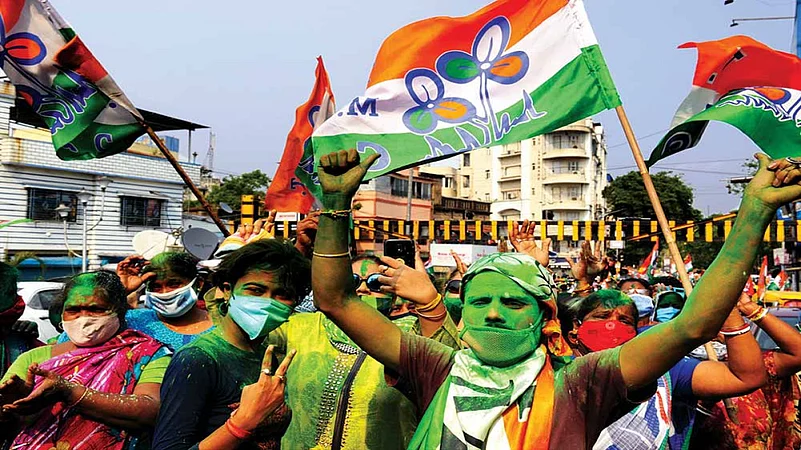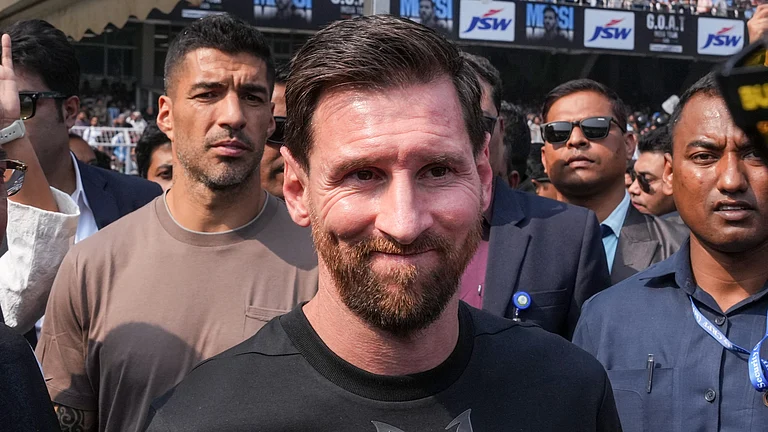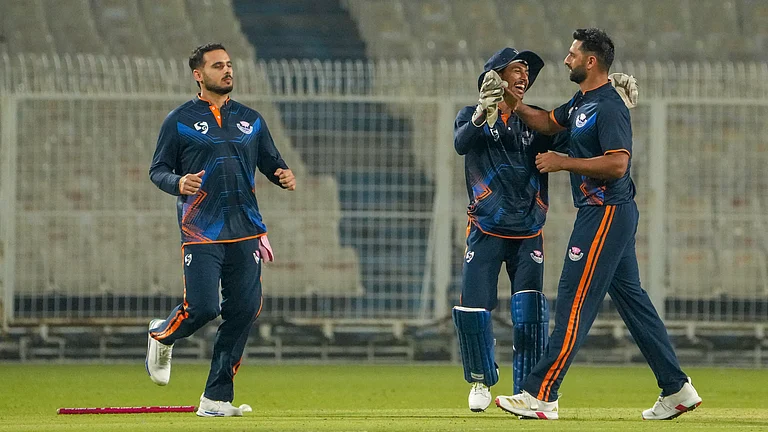If it was ‘anger’ in 2019, it was ‘fear’ in 2021. This is perhaps the decisive factor behind the massive victory of Mamata Banerjee’s Trinamool Congress in the West Bengal assembly elections against a BJP led by Prime Minister Narendra Modi. BJP’s phenomenal rise and win in 18 Lok Sabha seats in the 2019 Lok Sabha polls could be attributed to the anger among a large section of the Bengal electorate. They were angry with the TMC on many counts—grassroots-level corruption, violence in the 2018 panchayat elections, Mamata’s pro-Muslim image, atrocities against Left workers….
Two years later, anger turned into fear amongst Bengalis. The urban middle class was afraid of bringing the Hindu nationalist BJP to power, lest they destroy the liberal culture Bengal boasts of. The rural poor were fearful of losing on the government welfare schemes they have enjoyed under the TMC government. The Muslims were terrified of losing a secure shelter. The Left supporters who voted for the BJP out of anger in 2019, both against Mamata and their own party leadership, were apprehensive of inviting a bigger evil to power.
ALSO READ: Positive Result, Negative Time
Be it the urban middle class, rural poor, Muslims, SCs/STs or women, every section of society voted along party lines to present TMC a mandate of 213 seats which even Mamata did not expect. “I didn’t think of getting this much (votes),” said Mamata in a post-result press briefing.
Significantly, it is for the first time since 1946 that neither Congress nor the Left will have any representation in the state assembly, but Bengal will largely retain the ‘Left leaning’ status it enjoys. After all, Mamata Banerjee’s populist approach is often regarded as ‘more Left than the Left’. Now, this result anoints her as the most credible fighter against the BJP.
ALSO READ: Broken Arrow
After the debacle in the 2019 Lok Sabha elections, Mamata was in disarray, with many predicting that she would not be able to finish her full term. However, she turned back. What were the factors that worked for her in the last two years?
First, the ‘PK’ factor. It was surprising that the TMC chief, who is known for her unilateral decisions, would agree to listen to a poll strategist. She did. Prashant Kishore and the IPAC team helped her on many counts. PK helped Mamata to douse the anger among the electorate. Mamata was advised to discard her ‘pro-Muslim’ image and rebrand herself as the ‘daughter of Bengal’. Mamata also addressed the issue of local-level corruption by publicly admitting that her leaders had taken ‘cut money’, and countered it by adding more to her copious government welfare schemes. Later, she extended the drive to address the issue through her ‘Didike Bolo’ campaign. She did not deny that there was corruption over the relief for Cyclone Amphan victims too. She asked party leaders to return the money they usurped illegally.
ALSO READ: What Did I Do!
Mamata knew that the BJP had been building their organisation in the state, and that she did not have a well-knit party apparatus. The IPAC team did the groundwork, much like a corporate agency, to hold the organisation together, get inputs from the grassroots, give feedback to leaders, look after social media, and suggest changes. For the first time, the TMC chief announced the names of block-level presidents from the state office. It irked leaders like Suvendu Adhikary and others, but worked in countering the RSS-BJP organisational push and their infamous IT Cell.

From her July 21 rally, Mamata Banerjee set the tone of the election narrative: “Outsiders will not rule Bengal”. Her winsome one-liner, Bangla nijer meyekei chay (Bengal wants its own daughter) became enormously popular. This pitting of Bengalis versus ‘outsiders’ touched the electorate, while women voters resolved to stand by ‘Bengal’s daughter’. It reflected in the results.
ALSO READ: Game Over, Or Halftime?
One of the factors that helped Mamata consolidate the floating voters was extending the ‘Swasthya Saathi’ health insurance scheme to all and the ‘Duare Sarkar’ programme that enabled many to enrol easily for government schemes. A first-time voter from Hooghly said, “I will vote for those who are giving me money in Kanyashree and has given me Rs 10,000 for buying a tab during the lockdown.”
The BJP’s preparations for the polls got a jolt at the stage of choosing of candidates. In fact, there was no need to open doors to TMC defectors to only seek to weaken the Trinamool, without considering their actual value. There was no reason to nominate them immediately, without considering ground realities. It angered not only the electorate but also BJP workers and local Sangh pracharaks. Most TMC turncoats, including former ministers Rajib Banerjee, Rabindra Nath Ghosh (from Singur), and former MLAs Subhrangshu Roy, Baishali Dalmiya, Prabir Ghoshal and Biswajit Kundu lost the elections.
ALSO READ: The Other Pinarayi
The BJP faced a challenge in turning the negative votes of 2019 into positive votes in 2021. According to the last Lok Sabha elections, it led in 121 assembly constituencies. The job was to cross the halfway mark of 148. In preparing to do so, the state leadership depended much on Narendra Modi, Amit Shah and central leaders. Lack of a credible local face against a street-fighter like Mamata made them suffer. Most BJP MPs, including Babul Supriyo and Locket Chatterjee, could not replicate the results of 2019 in their constituencies. For example, in Hooghly, the BJP had a lead in eight assembly segments, according to the 2019 election results. It could retain only four seats. Locket Chatterjee, who had a lead of about 21,000 votes in Chunchura in 2019, lost it to TMC candidate Asit Majumdar by over 18,000 votes.
While the BJP could somehow retain the North Bengal districts of Coochbehar, Jalpaiguri and Darjeeling, it lost its ground in Jangalmahal, where the TMC recovered its lost seats. In Jhargram, which TMC lost entirely to the BJP in 2019, Mamata Banerjee’s party won all four seats. In West Midnapore, TMC won seven seats that fall under BJP MP and state president Dilip Ghosh’s constituency. Even the Matua votes were divided between the BJP and the TMC.
ALSO READ: Captain @99
Clearly, the SCs and STs voted according to party lines, rather than en masse for a single party. They also held firm against the trap of the RSS-BJP’s ‘subaltern-Hindutva’ theory or caste/identity politics. Jangalmahal voters, mostly adivasis, affirmed that local reach-out programmes by the ruling party did indeed douse their ‘anger’ against its earlier corruption and atrocities.
ALSO READ: Serving Them A Full-Bodied Cuppa
The people of Bengal also rejected Narendra Modi’s concept of a ‘double-engine’ government—the same party in power at the state and the centre. Except for a brief interlude, for the past four decades Bengalis have voted for parties that have never ruled at the Centre. Mamata can highlight the old chestnut of “deprivation of Bengal by the central government” for another five years.
ALSO READ: Two In The Muddle
Of course, the Bengal assembly elections were also about polarisation at different layers. As the results in Malda and Murshidabad—Muslim-dominated districts and Congress bastions—show, the BJP has been successful in creating religious polarisation. While Hindu votes did not consolidate, Muslim votes did. The Trinamool benefited. In Murshidabad’s Lalgola, voters chose the TMC candidate over the Congress’s Abu Hena, who served six terms in the assembly or, in Farakka, over Congress candidate Mainul Haq, a five-time MLA. While the Congress could not win any seats in Malda, BJP managed to get four. The fierce communal campaign in Nandigram, where Mamata took on former associate Suvendu Adhikary, was also unprecedented. The close, and disputed, results show how polarised this constituency was.
ALSO READ: Prince Who Finally Became King
With no Left representation and with the BJP’s inexorable rise as the main opposition party in Bengal, the political equations would change for years to come. Keeping an eye out only for elections, coupled with Trinamool’s lack of any strong ideological foundation may not help Mamata survive the BJP onslaught for very long.
ALSO READ: The Dravidian Wall
Mamata Banerjee would love to project herself as the face against Narendra Modi nationally. She has already threatened to sit in dharna if the Centre does not provide vaccines free of cost for all. But, at a national level, the Opposition needs to build a narrative against the RSS-BJP. All other regional parties would have to accept Mamata as their leader too. Most importantly, the Congress has to concede her the space to lead the fight. While Mamata could retain a Left-leaning Bengal in the face of a Hindu nationalist pitch, it will be challenging for her to repeat the same feat at the national level.
(The writer is assistant professor, Indian Institute of Mass Communication, Dhenkanal. Views expressed are personal)





















